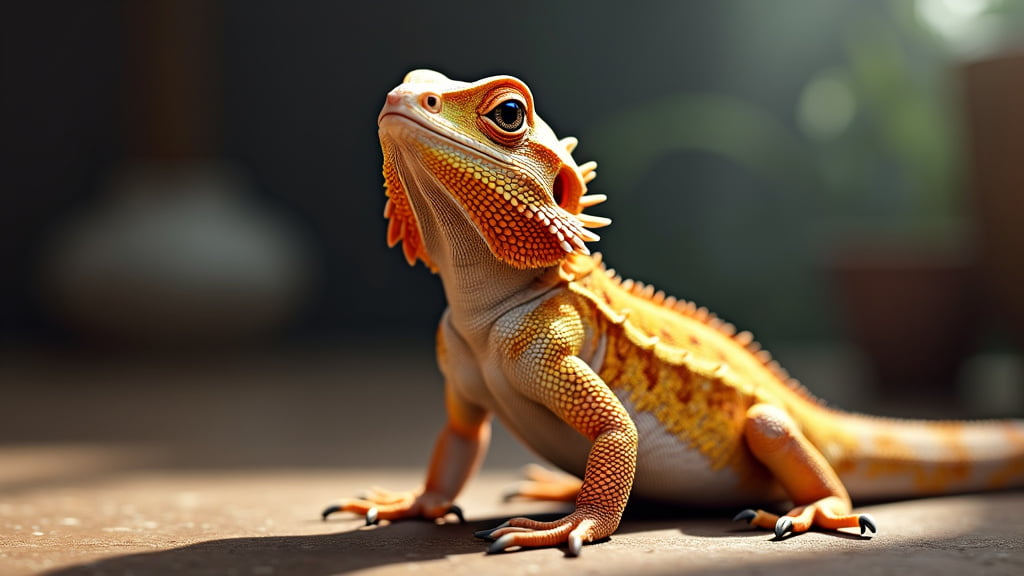Bringing a bearded dragon into your home is an exciting experience, but ensuring their environment is just right can be a bit tricky. One of the most vital aspects of their habitat is lighting. Proper lighting is crucial for their health and well-being. In this blog post, we will delve into troubleshooting common lighting issues for bearded dragons, offering practical advice and expert insights. Let’s get your dragon basking happily again!
The Importance of Proper Lighting
Before delving into troubleshooting, let’s understand why lighting is so important for bearded dragons. These reptiles are native to the arid regions of Australia and require specific lighting conditions to thrive.
UVB Lighting
UVB light enables bearded dragons to produce vitamin D3, which is essential for calcium absorption. Without adequate UVB exposure, dragons can suffer from metabolic bone disease (MBD), a serious and potentially fatal condition.
Heat Lamps
Bearded dragons are ectothermic, meaning they rely on external heat sources to regulate their body temperature. A basking lamp is crucial to provide an appropriate temperature gradient within their enclosure.
Common Lighting Issues and Solutions
Lighting problems can lead to a variety of health issues in bearded dragons. Here are some of the most common problems and how to troubleshoot them.
Inadequate UVB Exposure
Symptoms
- Lethargy
- Lack of appetite
- Softened jaw or limbs
Solutions
- Check UVB Bulb Quality: Ensure the UVB bulb is designed for reptiles and emits enough UVB rays. Replace the bulb every six months, even if it hasn’t burned out, as UVB emissions decrease over time.
- Proper Placement: The UVB bulb should be placed within 6-12 inches of the basking spot. Use a mesh screen if necessary, but avoid glass or plastic lids as they block UVB rays.
- Duration: Provide 10-12 hours of UVB light daily to mimic their natural environment.
Incorrect Temperature Gradient
Symptoms
- Inactivity
- Digestive issues
- Poor shedding
Solutions
- Temperature Zones: Create a basking spot of 38-42°C (100-107°F) and a cooler end around 24-29°C (75-85°F). Use a thermostat to maintain consistency.
- Multiple Thermometers: Place thermometers in different zones of the enclosure to ensure accurate readings.
- Adjust Heating Elements: Depending on the ambient temperature of your home, you might need additional heating elements like ceramic heaters or under-tank heaters to maintain the proper gradient.
Inconsistent Light Schedule
Symptoms
- Stress
- Sleep disturbances
Solutions
- Regular Schedule: Use a timer to maintain a consistent light schedule. Aim for 10-12 hours of light followed by 10-12 hours of darkness.
- Natural Light Simulation: Try to mimic day-night cycles as closely as possible. This can be particularly important if using both UVB and heat lamps separately.
Advanced Troubleshooting Techniques
Sometimes, even after addressing the basic issues, you might still face challenges. Here are some advanced troubleshooting techniques to help resolve persistent problems.
Evaluating the Enclosure Setup
Subsection: Enclosure Size
- Adequate Space: Ensure your dragon’s enclosure is large enough to create distinct temperature zones. A minimum of 120x60x60 cm (48x24x24 inches) is recommended for an adult bearded dragon.
Subsection: Reflective Surfaces
- Enhance Light Distribution: Use reflective backgrounds or surfaces to help distribute light more evenly throughout the enclosure.
Assessing Bulb Quality and Brand
Subsection: Reliable Brands
- Invest in Quality: Use bulbs from reputable brands known for manufacturing reliable reptile lighting. Cheap, off-brand bulbs can lead to inconsistent UVB and heating.
Subsection: Testing Bulb Output
- UVB Meters: Consider investing in a UVB meter to measure the output accurately. While pricey, these tools ensure your dragon’s getting the right exposure.
Conclusion
Proper lighting is essential for a bearded dragon’s health. By ensuring they have adequate UVB exposure, a correct temperature gradient, and a consistent light schedule, you can help your dragon live a happy and healthy life. If you run into issues, don’t hesitate to revisit these troubleshooting tips. And remember, any persistent health issues should always be evaluated by a vet.
For more insights on providing the best care for your bearded dragon, check out our Bearded Dragon Lighting Guide. And if you’re looking for high-quality lighting solutions, visit Reptile Supplies Online.
By following these guidelines, you’ll create a comfortable and healthy environment for your bearded dragon, ensuring they thrive under your care. Happy herping!

